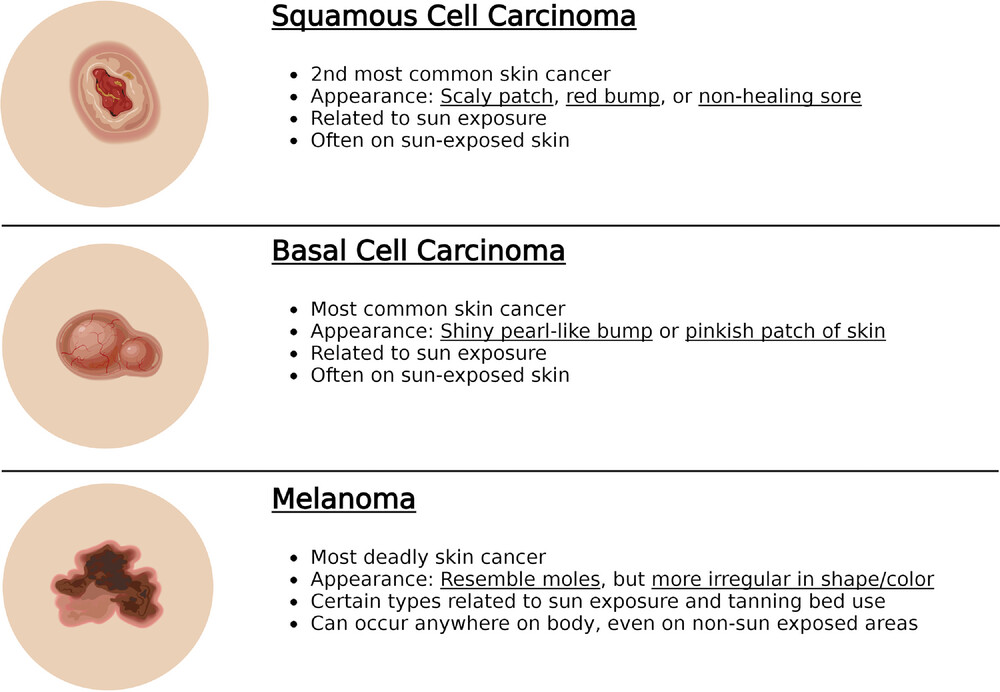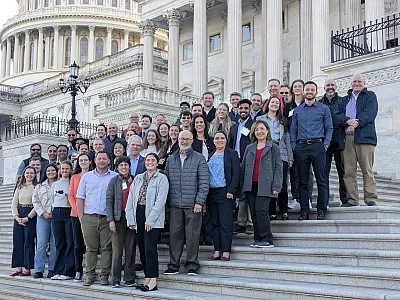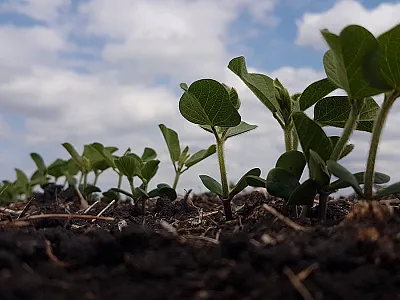Skin Cancer—What Agronomists Need to Know

With the 2024 cropping season underway, and the focus of many of our readers on the health of the crops and soils of their farmer-clients, it’s important not to neglect one’s personal health. Agronomists and crop advisers are often exposed to unique environmental hazards with significant sun exposure being a large one. In this article, we would like to emphasize how agronomists and crop advisers may be at higher risk for developing skin cancer and ways to address this increased risk.
Types of Skin Cancer
Skin cancer is when one’s skin cells start to grow abnormally, which is often due to ultraviolet (UV) radiation from the sun. Risk factors for the development of skin cancer include: light skin, freckles, history of tanning bed use, working outdoors, and family history of skin cancer.
The three most common skin cancers are: (1) squamous cell carcinoma (2) basal cell carcinoma, and (3) melanoma. More information about these three types are shown in Figures 1 and 2.

What Can Agronomists Do?
The best way to prevent skin cancer from developing is to practice sun safety by protecting your skin from the sun’s harmful UV rays. Ultraviolet rays are strongest between 10:00 am and 4:00 pm; therefore, being extra careful to avoid excessive sun exposure during these times is recommended.
Sun protective practices can include seeking shade when possible, wearing wide-brimmed hats to shade one’s skin, and using a broad-spectrum sunscreen with a sun-protective factor (SPF) of 30 or higher. Even the best sun blocks need to be reapplied every two hours. Some important facts about UV radiation that are not widely known are that clouds only block 20% of UV radiation and that not all UV is blocked by windows.
In addition to practicing sun safety, establishing care and following up regularly with a board- certified dermatologist is crucial to the prevention and early detection of skin cancer. When diagnosed and treated early, most skin cancers are highly treatable.
Conclusion
The rates of skin cancer in the United States have consistently risen over the last 30 years (Guy et al., 2015; Siegel et al., 2022). It is estimated that one in five Americans will develop a skin cancer over their lifetime (Stern, 2010). Due to the nature of the occupation, agronomists are at increased risk of developing skin cancer and thus must be even more aware of the signs and symptoms of skin cancer. As agronomists are trained to carefully analyze crop production and our soil, entrusting similar care of our skin to medical professionals is a step every agronomist should take to keep oneself healthy and able to continue walking the fields.
References
Guy, G.P., Thomas, C.C., Thompson, T., Watson, M., Massetti, G.M., & Richardson, L.C. (2015). Vital signs: Melanoma incidence and mortality trends and projections—United States, 1982–2030. Morbidity and Mortality Weekly Report, 64(21), 591–596.
Siegel, R.L., Miller, K.D., Fuchs, H.E., & Jemal, A. (2022). Cancer statistics, 2022. CA: A Cancer Journal for Clinicians, 72(1), 7–33. doi:10.3322/caac.2170.
Stern, R.S. (2010). Prevalence of a history of skin cancer in 2007: results of an incidence- based model. Archives of Dermatology, 146(3), 279-82. doi:10.1001/archdermatol.2010.4
Text © . The authors. CC BY-NC-ND 4.0. Except where otherwise noted, images are subject to copyright. Any reuse without express permission from the copyright owner is prohibited.










